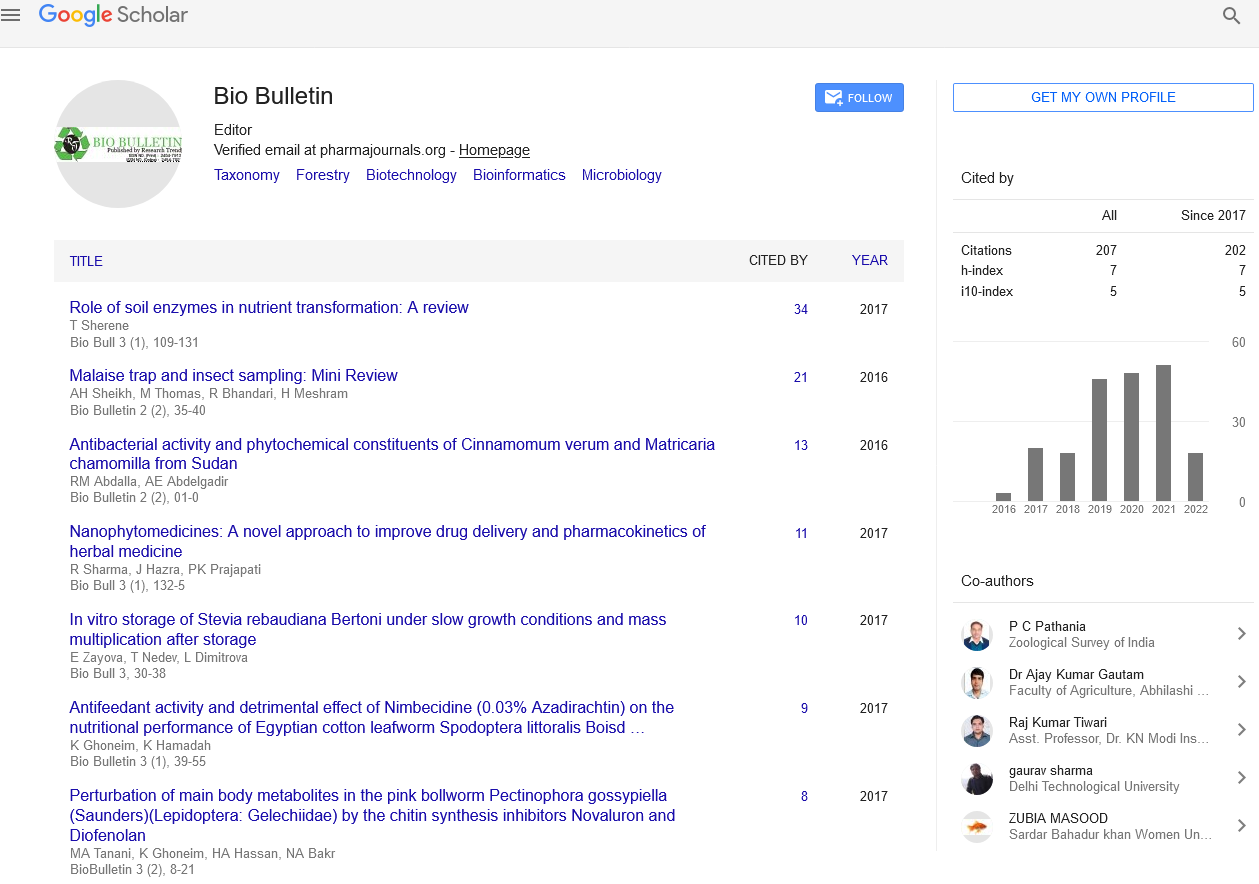Organic Materials as Nutrition Source in Various Living Organisms
Commentary - (2022) Volume 8, Issue 1
Description
At a microscopic level, a saprotrophic organism is known as saprophyte or saprobe, feeds on non- living organic materials known as detritus. The words saprotroph and saprós ("rotten, putrid") are derived from the Greek saprós ("rotten, putrid") and troph ("nourishment"). Fungi, some bacteria, and fungus-like organisms known as water moulds are examples of saprotrophic organisms that are important for decomposition and nutrient cycling (phylum Oomycota), the nutritional substrate (e.g., a dead creature or other non-living organic materials) is immediately digested by a range of enzymes that the saprotroph excretes. The enzymes break down the debris into smaller molecules that are taken by the cells and used to nourish the organism.
Saprophytes consume dead and rotting materials through extracellular digestion, they exude digestive chemicals into the environment which help to break down organic materials into simpler forms and the nutrients produced are directly taken by the organisms through their cell membranes, proteins are broken down into amino acids in saprophytic nutrition, starch is broken down into simple sugars and fats are broken down into glycerol and fatty acids, these final products are carried through cell membranes.
A few instances of saprophytes
Mucor: Is often known as mould, is a saprophytic fungus that thrives on degraded organic materials, particularly carbohydrates-rich organic debris. It can be found on stale bread, vegetables, and excrement, among other things and can reproduce both sexually and asexually.
Yeast: Yeast is frequently found on sweet foods, it can be found in considerable levels in grape juice, floral nectar, and vineyards. Under ideal conditions, it reproduces by budding.
Penicillium: Penicillium can be found on rotting foods like bread, jam, jellies, fruits, and vegetables, as well as moist leather and shoes.
Groups of major saprotrophs
Fungi: Fungi are one of the most efficient decomposers of complex organic molecules and recyclers of nutrients in the ecosystem among the major categories of saprotrophs. Fungi are among the most important decomposers of plant matter which accounts for the great bulk of detritus in terrestrial ecosystems. The majority of plant tissue is made up of cell-wall material, which is mostly made up of cellulose, a complex carbohydrate. Cellulose is made up of numerous glucose molecules that are organised in such a way that it is difficult for most organisms to break down. Fungi, on the other hand, have evolved a set of enzymes that allow them to break down the complicated structure of cellulose and convert it to simple carbohydrates, this function is important for the carbon cycle because it allows for the release of carbon dioxide from decaying organisms and changes plant organic matter into nutrients that fungus and other creatures can use.
Marasmius species, as well as many other common garden and woodland mushrooms, breakdown leaves and twigs in organic litter, such as those found on the forest floor. Pilobolus, for example, is a fungus that feeds mostly on herbivore excrement, wood- decomposing fungus such as turkey tails (Trametes), oyster mushrooms (Pleurotus), and Ganoderma which decompose both cut timber and the dead bark of living trees, can have negative economic effects for the lumber business. Serpula lacrymans, a wood- decay species, causes "dry rot" damage to homes.
Bacteria: Bacteria are well-known decomposers of dead animal flesh, and they are adept at breaking down animal tissues into simpler organic components because meat and other food products represent the types of resources that saprotrophic bacteria would use in nature, a number of them, notably Escherichia coli, are linked to food-borne diseases.
Spirochaeta cytophaga, for example, has the ability to breakdown cellulose by absorptive feeding; the rumen of cows contains symbiotic cellulosedegrading bacteria that help digestion by fermenting the cellulose in grass, these organisms, like fungi, have the ability to partially break down cellulose into intermediate molecules, easing the decomposition process.
Molds: Molds that grow in water, also known as Oomycetes, are found in both freshwater and saltwater habitats all over the world. Some species, especially those in the Saprolegniales order, are saprotrophs, meaning they digest both plant and animal matter. Those creatures are among the most important decomposers in freshwater aquatic ecosystems.
Author Info
Fenny Morris*Citation: Morris F (2022) Organic Materials as Nutrition Source in Various Living Organisms. Bio Bulletin, 8(1): 01-02.
Received: 02-Mar-2022, Manuscript No. BIOBULLETIN-21-62420; , Pre QC No. BIOBULLETIN-21-62420(PQ); Editor assigned: 07-Mar-2022, Pre QC No. BIOBULLETIN-21-62420(PQ); Reviewed: 21-Mar-2022, QC No. BIOBULLETIN-21-62420; Revised: 28-Mar-2022, Manuscript No. BIOBULLETIN-21-62420(R); Published: 07-Apr-2022, DOI: 10.35248/2454-7921.22.8.091
Copyright: This is an open access article distributed under the terms of the Creative Commons Attribution License, which permits unrestricted use, distribution, and reproduction in any medium, provided the original work is properly cited.

